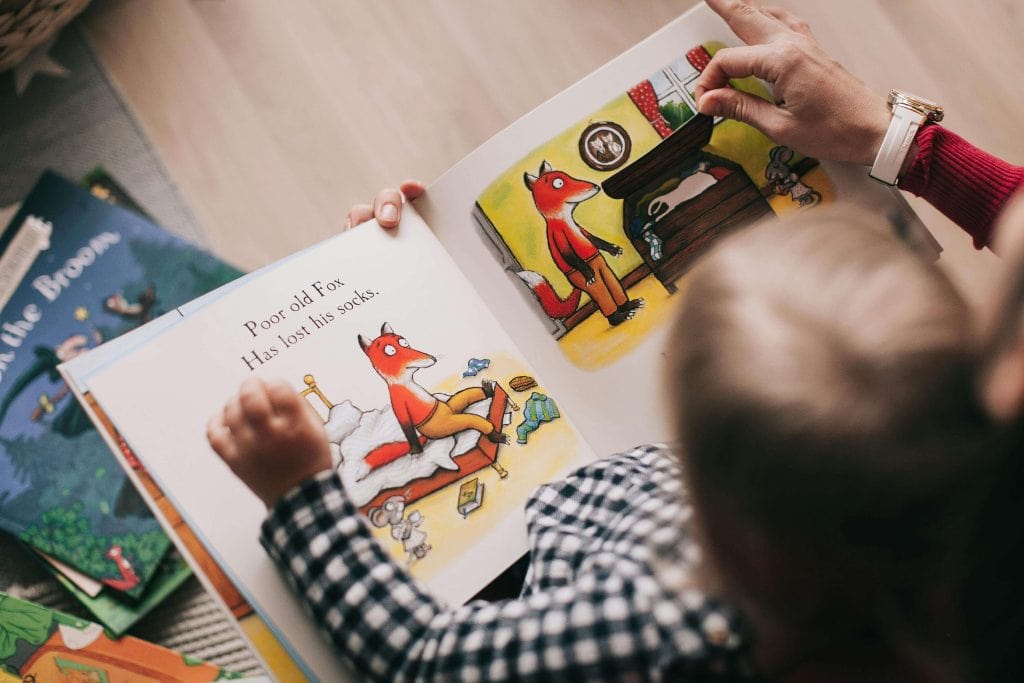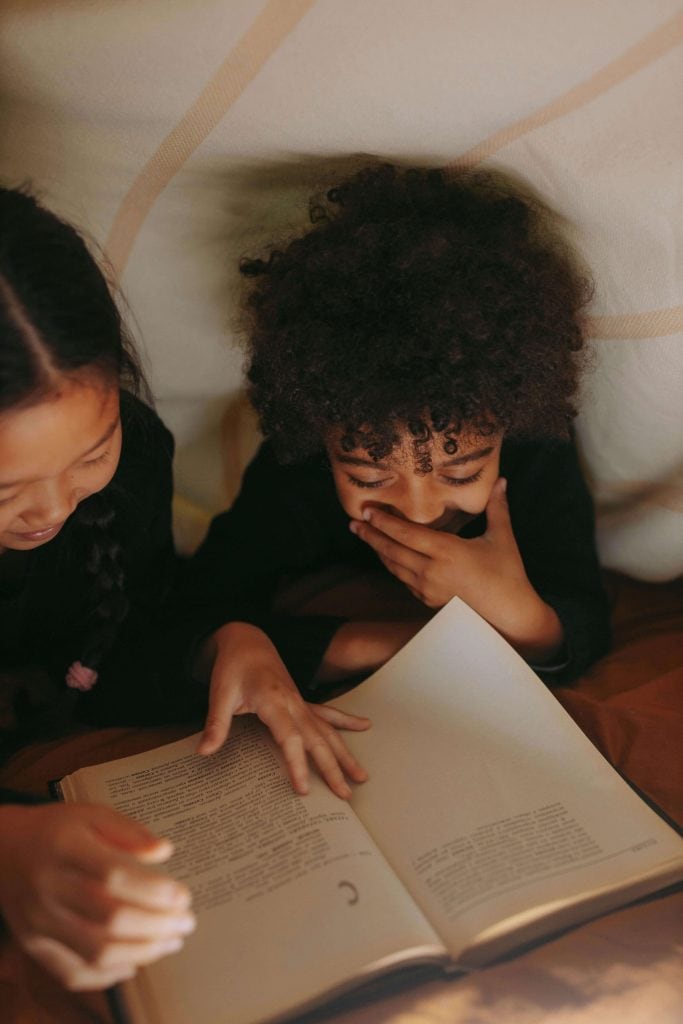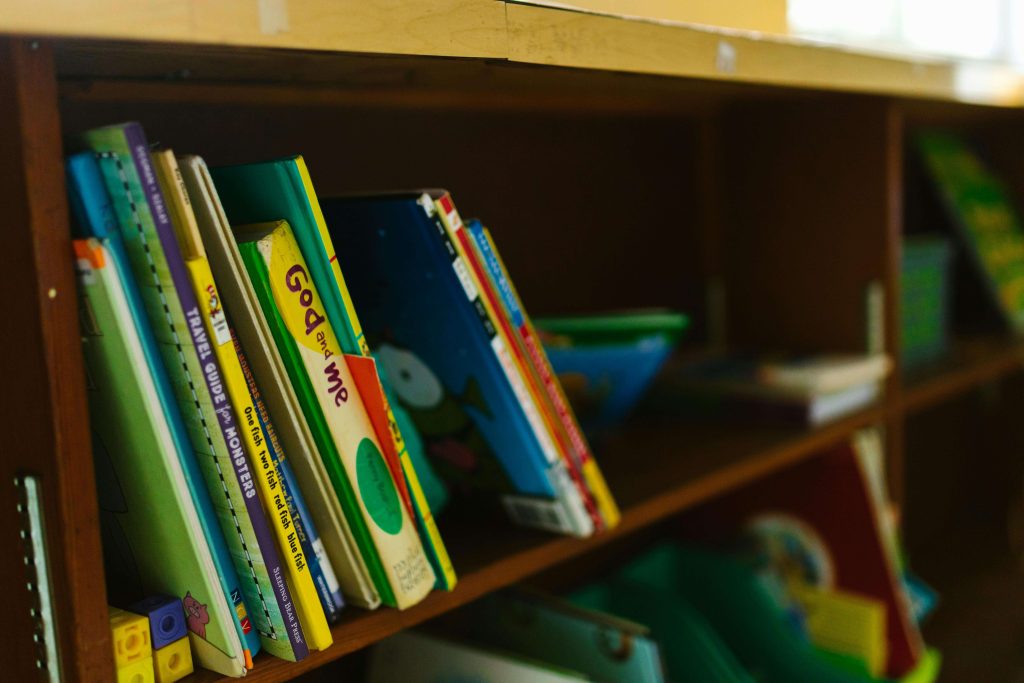The Best Autistic Books for Children (Without Stereotypes or Ableist Narratives)
Finding autistic books for children shouldn’t be hard, but many parents quickly realize that what’s most available isn’t always what’s most helpful. A lot of book lists focus on age or reading level, but few center inclusivity, affirming representation, or the real concerns many parents have about outdated or ableist narratives.
When I was doing research for this blog post, I noticed that most resources simply list titles, often without much context or thought for how an autistic child might actually experience the book. My goal here is different. I want to help you choose stories that respect your child’s identity, reflect diverse experiences, and support communication, connection, and self-understanding in a way that truly fits.
In this post, you’ll learn what to look for (and what to avoid) when choosing books for autistic children, discover curated book recommendations organized by function—not just age—and get simple tips for adapting any book to better support your child’s learning and engagement.

How to Choose the Best Autistic Books for Children (So You Stay in the Driver’s Seat as a Parent)
Not every book about autism is the most helpful for autistic children. In fact, some well-meaning titles can end up doing more harm than good. Whether you’re building a home library or choosing a book to read with your child’s class, it’s worth looking closely at how autism is portrayed, and whose voice is centered.
What to Look for in an Autistic-Friendly Book
- Affirming representation Look for books that show autism as a natural part of who someone is, not something to pity or fix. Characters should feel real and well-rounded, not reduced to a diagnosis or written solely to make neurotypical readers feel good.
- Clear, concrete language Many autistic children process language best when it’s direct and predictable. Books that use simple sentence structures, repeated phrases, or minimal figurative language tend to be easier to follow and more enjoyable to re-read.
- Engagement through visuals Books that lean heavily on pictures rather than dense blocks of text are more accessible for visual thinkers and gestalt language processors. Strong visual cues also help support comprehension and engagement.
- Predictable storytelling A clear beginning, middle, and end helps reduce cognitive overload. Many autistic readers benefit from structure, so stories with open-ended plots or abstract themes can be harder to connect with.

Red Flags to Watch For
Even books marketed as “autism-friendly” can send the wrong message. Some to watch out for:
- Stories that focus only on how hard it is for the parent or sibling
- Language about “curing” or “fixing” autism, or visuals like puzzle pieces
- Books that heavily promote ABA as the only way to support autistic children
- Autistic characters who don’t speak, act, or think for themselves—and only exist to teach other kids a lesson
Why Representation Matters in Books
When autistic children see themselves reflected positively in books, it helps them build a stronger sense of identity, confidence, and belonging.
Research has shown that representation plays a powerful role in shaping self-perception, especially for neurodivergent kids who may not always see themselves reflected accurately in everyday settings. Many autistic self-advocates have also spoken about the long-term impact of stories that frame autism as a problem to be solved or something that only causes stress for others. Choosing affirming books isn’t just about inclusion. It’s about helping your child feel respected, valued, and understood, starting with the stories they see themselves in.
My Curated List: Best Autistic Books for Children (Organized by Function, Not Age)
So, where do you start if you want to find autistic books for children that actually reflect your child’s needs, preferences, and identity?
One really interesting thing I’ve noticed is that most book lists focus on age or reading level. But that approach doesn’t always work for autistic kids. So instead, I’ve pulled some good books for autistic children and organized these recommendations by function: how the book supports development, identity, or regulation. This makes it easier to find a book that connects with your child, regardless of whether they’re reading independently or simply engaging with pictures and language in their own way.
Books That Explain Autism in an Affirming Way
For autistic kids who are starting to understand their diagnosis and identity.
These books help kids make sense of who they are without suggesting they need to be fixed, changed, or masked. They’re ideal for introducing the concept of neurodiversity in an age-appropriate, strengths-based way.
- Just Right for You: A Story About Autism by Melanie Heyworth: this is a gentle, affirming book written by an autistic advocate. It presents autism as a natural part of a person’s identity, using clear language and neurodiversity-positive messaging.
- I Am Odd, I Am New by Benjamin Giroux: this powerful poem, written by an autistic child, explores the feeling of being different while embracing individuality. It’s simple, emotional, and validating.
- All My Stripes: A Story for Children With Autism by Shaina Rudolph and Danielle Royer: this is a story about Zane the zebra who worries his autism makes him stand out. His mother helps him see that autism is just one of many things that make him who he is.
- A Day With No Words by Tiffany Hammond: featuring a Black non-speaking autistic child and his family, this story offers a powerful look at communication through AAC and centers joy, love, and understanding without explanation or apology. For kids who need help navigating feelings and communication. These books are especially helpful for children who are learning to name their feelings, handle overwhelm, or advocate for what they need. Many autistic kids experience big emotions but struggle to process or express them in ways adults expect. These titles offer gentle, practical support—without pathologizing those emotions or demanding conformity.
- The Awesome Autistic Go-To Guide: A Practical Handbook for Autistic Teens and Tweens by Yenn Purkis and Tanya Masterman: straightforward, empowering, and neurodiversity-affirming, this guide supports self-understanding and advocacy for older kids and tweens. A helpful resource for building language around identity and needs.

Books That Support Emotional Regulation and Self-Advocacy
For kids who need help navigating feelings and communication
These books are especially helpful for children who are learning to name their feelings, handle overwhelm, or advocate for what they need. Many autistic kids experience big emotions but struggle to process or express them in ways adults expect. These titles offer gentle, practical support without pathologizing those emotions or demanding conformity.
- When Things Get Too Loud by Anne Alcott: this beautifully illustrated book helps children understand sensory overload and introduces simple coping strategies. It validates big feelings and offers comfort without shame or pressure to “calm down fast”. It also helps children understand sensory overload and introduces simple coping strategies.
- B is for Breathe: The ABCs of Coping With Fussy and Frustrating Feelings by Dr. Melissa Munro Boyd: a colorful, diverse, and approachable book that walks kids through a variety of self-regulation tools. The alphabet format makes it easy to revisit strategies and opens the door to conversation. This is also a colorful, diverse, and approachable book that walks kids through a variety of self-regulation tools.
- How to Be Me by Cath Howe: a thoughtful middle-grade novel about a boy working through grief, anxiety, and identity. Written with compassion and subtlety, it affirms autistic readers without labeling them or forcing a tidy ending.
- The Awesome Autistic Go-To Guide: A Practical Handbook for Autistic Teens and Tweens by Yenn Purkis and Tanya Masterman: straightforward, empowering, and neurodiversity-affirming, this guide supports self-understanding and advocacy for older kids and tweens. A helpful resource for building language around identity and needs.

Books That Are Visually Engaging and Low Demand
For kids who struggle with too much text or complex language.
Not every child engages with books in traditional ways. Some flip through for the pictures, others echo favorite lines, and many simply need stories that don’t overwhelm. These books are ideal for gestalt language processors, visual thinkers, and kids who thrive with simple, spacious storytelling.
- I Will Dance by Nancy Bo Flood: this gentle, beautifully illustrated story follows a non-speaking girl who dreams of joining a dance company. The text is simple and rhythmic, making it accessible to children who prefer fewer words but rich visuals.
- It Was Supposed to be Sunny by Samantha Cotterill: from the Little Senses series, this book explores sensory needs and unexpected changes during a birthday party. The illustrations are expressive and relatable, and the text is designed for sensory-sensitive readers.
- Sometimes I Feel Like a Fox by Danielle Daniel: each page introduces a different totem animal as a way to explore feelings and identity. The format is clean and repetitive, with powerful imagery that invites reflection without overwhelm.
- The Quiet Book by Deborah Underwood: a soothing look at different types of quiet—like “first one awake quiet” or “thinking of a good reason you were drawing on the wall quiet.” Minimalist in both text and design, it speaks to the sensory world many autistic children navigate daily.
Books That Model Social Interactions Without Forcing Conformity
For kids who want guidance on social situations without masking expectations.
Social stories can be helpful, but only when they respect the child’s natural communication style and boundaries. These books offer support for navigating friendships, routines, and community spaces without implying that autistic kids need to behave like everyone else to belong.
- The Spectrum Girl’s Survival Guide: How to Grow Up Awesome and Autistic by Siena Castellon: written by a teen advocate, this guide speaks directly to autistic girls and nonbinary youth navigating identity, friendships, and growing up. It’s supportive without being patronizing and celebrates differences rather than smoothing them out.
- A Friend for Henry by Jenn Bailey: a gentle, respectful story about an autistic boy searching for a friend who understands him. It honors sensory preferences, routine, and personal space without asking him to change who he is.
- This Beach is Loud! by Samantha Cotterill: a story that validates sensory overload during a beach trip, showing how a child and parent work through it together. It models regulation strategies without pushing past discomfort for the sake of “just enjoying the day.”
- Too Sticky! Sensory Issues With Autism by Jen Malia: this story centers a girl with sensory sensitivities and shows her preparing for a slime experiment at school. It frames her experience in a positive light and shows adults offering support rather than pressure.
4. What If None of These Books Feel Right for My Child?
How to Adapt Any Book for an Autistic Reader
As hard as I tried to find something that would work for every kid, chances are that this list won’t work for every kid, and that’s okay. I’ll teach you how to adapt any book for an autistic reader.
Just because a book is labeled “autism-friendly” doesn’t mean it will connect with your child, and that’s okay. Sometimes it’s not about finding the perfect book, but about adapting it in a way that feels right for your child’s learning style and sensory needs.
Here are a few ways that you can do that:
- Pair books with visual supports. If your child uses AAC or is still developing language, try adding a core board, communication symbols, or gesture modeling as you read. It gives them another way to engage and respond.
- Use books interactively. Some kids like to point, script, echo, or make sound effects while you read. That’s engagement, even if it doesn’t look traditional. Let them take the lead and interact in the way that feels most natural to them.
- Follow their interests, not developmental milestones. If your child wants to flip through the same book ten times or focus only on the pictures, that’s meaningful too. Repetition, comfort, and visual exploration are all valuable ways to engage with books.

Final Thoughts: The Goal Is to Empower, Not Just Educate
Choosing the right book for an autistic child isn’t about checking a box or finding the most popular title. It’s about finding stories that resonate: books that make your child feel understood, valued, and safe to be themselves.
Whether your child is just starting to understand their identity, working through big feelings, or simply enjoys flipping through pages on their own terms, the best autistic books are the ones that honor who they are. That might mean skipping the book everyone’s talking about in favor of one that aligns better with your child’s sensory preferences or communication style. It might mean re-reading a favorite over and over, or adapting a story in a way that works for them.
At the heart of it, you know your child best. This post isn’t here to prescribe. It’s here to help you feel more confident in choosing what works for your family.
If you want more neurodiversity-affirming resources like this (plus tools to support your child’s growth and identity) sign up for the newsletter!
You’ll get thoughtful, practical support designed to meet you where you are.







